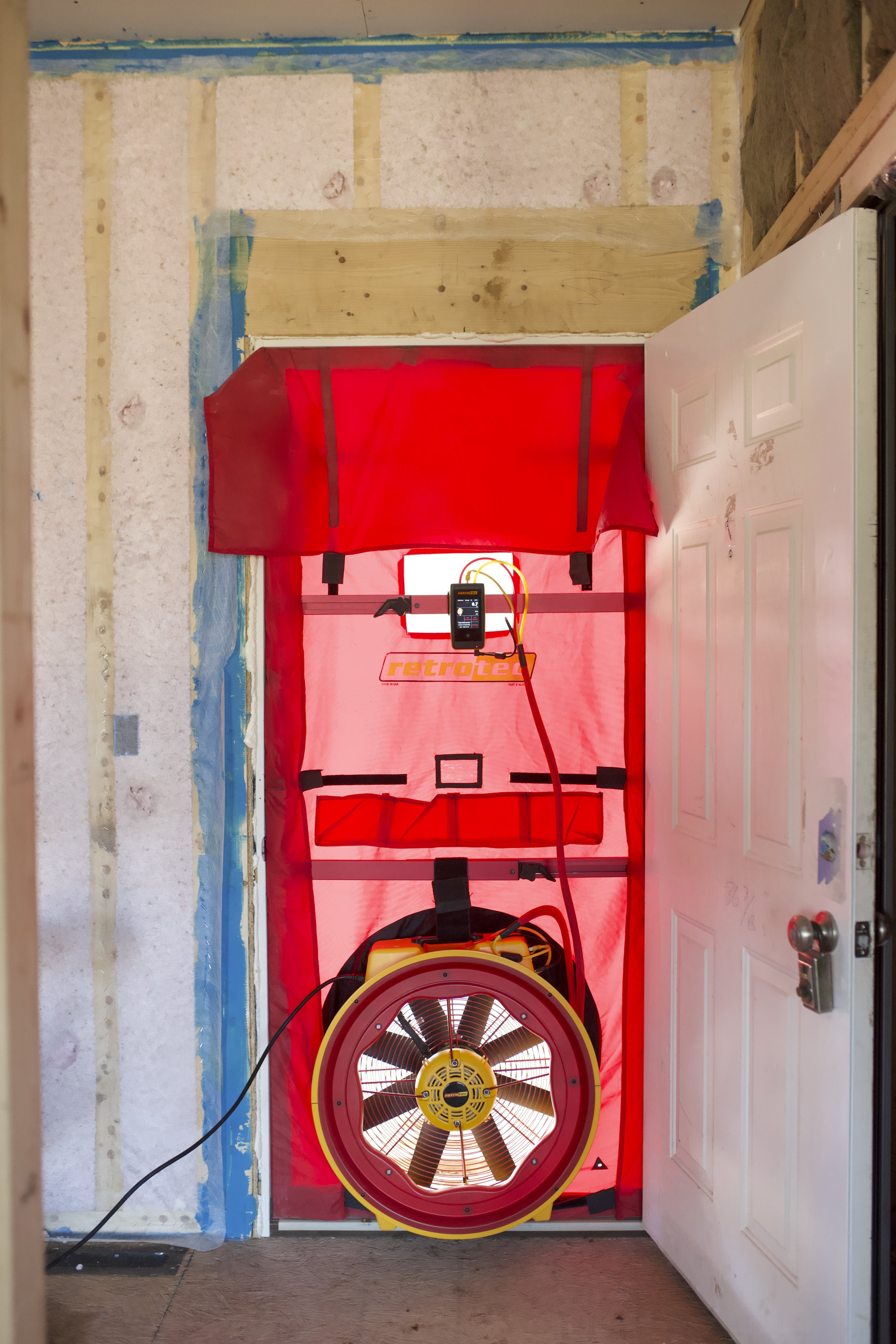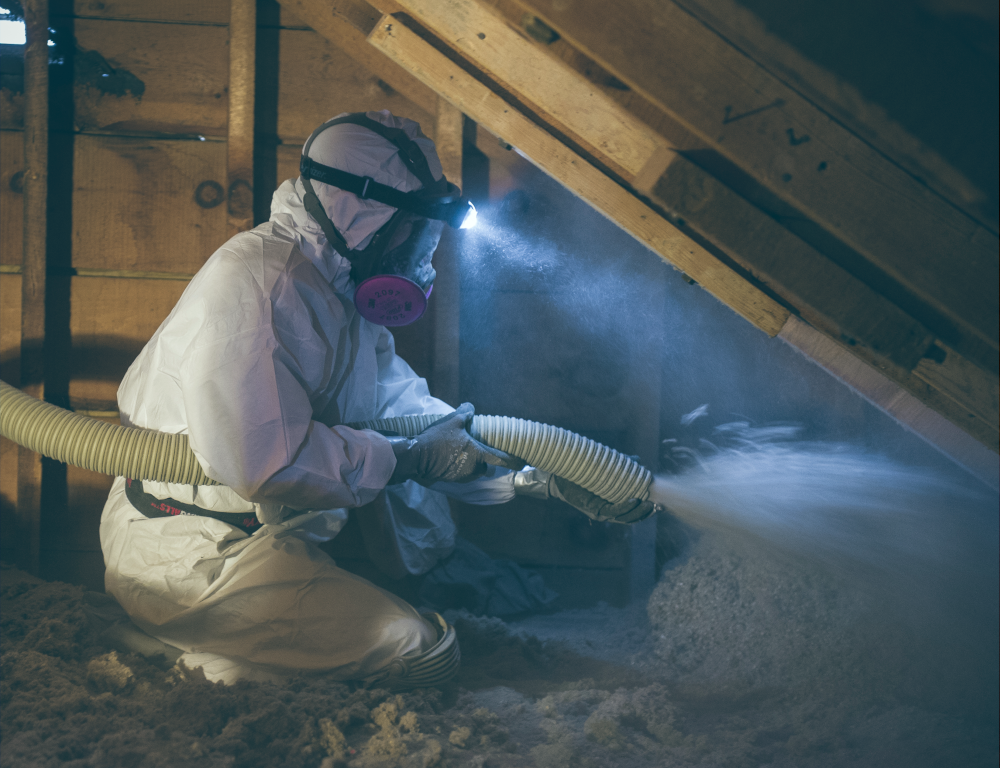The Duty of Power Screening in Achieving an Airtight Solution for Your Residential or commercial property
Power screening is essential for homeowner looking for to develop a closed environment. It recognizes air leaks and inadequacies that can jeopardize power efficiency. Common culprits consist of gaps around home windows and doors. Using methods like blower door examinations and thermal imaging, homeowners can get understandings into their residential or commercial property's susceptabilities (energy testing south carolina). Understanding these findings is essential. What steps should be taken when air leakages are recognized? The responses hold the key to improved convenience and savings
Comprehending Energy Screening and Its Importance
Energy testing plays an important duty in evaluating the airtightness of structures and structures. By gauging air leakage, this technique offers crucial insights into a residential or commercial property's power efficiency, thermal comfort, and total efficiency. Airtight structures reduce power usage, making sure that heating and air conditioning systems run efficiently. This screening process typically involves techniques such as blower door tests, which create a regulated environment to recognize unintended air pathways.Understanding the relevance of energy screening prolongs past conformity with building ordinance; it promotes an aggressive strategy to sustainability. Recognizing air leakages early can bring about prompt removal, eventually enhancing indoor air top quality and decreasing utility expenses. In addition, energy testing adds to the durability of structure products by minimizing wetness accumulation and related damages. As understanding of environmental impact rises, power testing comes to be a vital tool for homeowners and contractors going for high-performance homes.
Common Resources of Air Leaks in Residence
Recognizing typical sources of air leakages is important for boosting a property's power effectiveness. These leakages typically take place in different areas of a structure, considerably impacting cooling and heating costs. Usual culprits include gaps around doors and windows, where seals might deteriorate in time. Additionally, electric outlets and buttons can produce pathways for air exchange if not properly protected. Attic rooms and basements are likewise frequent resources, particularly where walls fulfill the roofing or the foundation. Other possible leak factors include plumbing penetrations, venting systems, and the areas bordering smokeshafts. Moreover, older buildings may deal with degraded building materials, increasing susceptability to air seepage. By recognizing these typical resources, home owners can take proactive steps to seal leakages, thus enhancing total power effectiveness and convenience within their rooms. Resolving these issues is an important part of establishing an airtight option for any kind of building.
Approaches of Power Screening: Blower Door and Thermal Imaging
Efficient energy testing methods, such as blower door tests and thermal imaging, play a vital function in identifying air leaks within a property. The blower door test includes depressurizing a building or pressurizing to measure airflow and identify leaks. A calibrated fan is mounted in an outside doorway, and the resulting pressure distinction highlights areas of unwanted air infiltration. This approach evaluates the total airtightness of the structure.Thermal imaging enhances blower door tests by visually discovering temperature variations on surface areas, exposing concealed air leaks. Infrared video cameras capture warm loss or gain, enabling precise recognition of issue areas, such as badly insulated wall surfaces or voids around doors and windows. air tight solutions. Together, these approaches give an extensive evaluation of a property's energy effectiveness, allowing residential or commercial property proprietors to resolve air leaks effectively and improve general efficiency
Advantages of Identifying Air Leaks
Identifying air leakages offers considerable benefits for power efficiency and indoor convenience. By sealing these leaks, structures can minimize energy consumption, bring about reduced energy bills and a reduced carbon impact. Furthermore, boosted airtightness adds to a much more secure indoor atmosphere, boosting overall comfort for passengers.
Energy Efficiency Improvements
Spotting air leaks is crucial for enhancing power performance in buildings. Determining these leaks permits residential property proprietors to deal with areas where conditioned air gets away or unconditioned air enters, causing considerable power financial savings. By sealing spaces and fractures, structures can maintain a consistent temperature, decreasing the need on home heating and cooling systems. This not only lowers energy bills however likewise lessens the ecological influence related to increased energy usage. Furthermore, energy efficiency enhancements add to a building's general sustainability, making it an extra eye-catching option for eco-conscious buyers or renters. Eventually, focusing on air leakage detection and remediation assists maximize power use, advertises accountable resource administration, and supports long-lasting economic benefits for homeowner.

Boosted Indoor Comfort
Attending to air leaks not only causes power financial savings but likewise significantly boosts indoor convenience. When air leakages are properly recognized and sealed, temperature policy within a building becomes much more effective. This causes consistent indoor temperatures, getting rid of cool drafts in winter and locations in summertime. Improved insulation likewise minimizes sound air pollution from outdoors, developing a quieter and even more serene living atmosphere. Furthermore, enhanced air top quality is attained by decreasing the infiltration of outdoor contaminants, allergens, and humidity, adding to the overall well-being of owners. Home owners experience an even more positive ambience, fostering relaxation and performance. Inevitably, correcting and recognizing air leaks is essential for achieving suitable interior comfort throughout the year.
How Power Testing Improves Convenience and Indoor Air Quality
Power testing plays an click resources important role in improving temperature law within indoor spaces, making certain a constant and comfy setting. By determining and securing air leaks, it additionally significantly reduces the seepage of pollutants, consequently improving interior air quality. This twin effect cultivates general health for residents.
Boosted Temperature Guideline
Effective temperature regulation substantially adds to both convenience and interior air quality, making it an important focus for contemporary structure layout. Energy testing plays a vital role in accomplishing this guideline by identifying areas where warm loss or gain takes place, enabling targeted enhancements. By making sure an impermeable building envelope, energy testing assists keep consistent indoor temperatures, minimizing the demand for excessive heating or cooling. This security enhances passenger convenience, as fluctuations in temperature can result in discomfort and frustration. In addition, effective temperature control can boost indoor air quality by reducing the risk of condensation and mold growth, which prosper in unequal temperature level problems. Power testing is vital for enhancing temperature management in domestic and commercial residential or commercial properties.
Decreased Contaminant Infiltration
While many variables add to interior air top quality, minimized contaminant infiltration stands apart as a crucial aspect that energy testing can substantially boost. Power screening identifies air leakages and weak factors in a building's envelope, which might enable outdoor toxins, allergens, and moisture to go into indoor rooms. By sealing these leakages, residential or commercial properties can effectively restrict airborne impurities, resulting in a healthier setting. Improved airtightness not just enhances convenience but additionally reduces the burden on home heating and cooling down systems, leading to energy savings. In addition, minimized contaminant infiltration cultivates far better general well-being for owners, as cleaner air advertises respiratory health and decreases allergy symptoms. Power screening plays a pivotal function in developing both an energy-efficient and health-conscious living area.
The Financial Influence of Energy Testing on Energy Costs

Actions to Take After Energy Testing Results
When power screening results are in, house owners need to very carefully review the searchings for to identify the most efficient course forward. The very first step involves determining the areas that call for improvement, such as air leaks or insulation shortages. Home owners need to after that focus on repairs based upon the extent of the concerns and their possible influence on power efficiency.Next, it is recommended to talk to experts who specialize in power performance to devise a complete activity plan. This may include remedies like securing spaces, adding insulation, or upgrading home windows and doors.After carrying out the needed changes, a follow-up energy examination can figure out the efficiency of the repair services. Continual surveillance is additionally necessary to assure that the building keeps its impermeable condition in time. By following these actions, home owners can significantly look at here enhance their residential or commercial property's energy efficiency, resulting in reduced energy bills and improved convenience.
Often Asked Questions
Exactly how Frequently Should I Conduct Power Evaluating on My Building?
The frequency of power testing must generally be every few years, or following considerable remodellings. Normal assessments assist identify effectiveness improvements and ensure that the home maintains excellent power efficiency gradually, adapting to altering conditions.
Is Energy Screening Necessary for New Constructions?
Power testing is essential for brand-new buildings, as it recognizes potential air leakage and insulation problems - air tight solutions. Carrying out these examinations warranties power efficiency, improves interior convenience, and fulfills building regulations, inevitably resulting in long-lasting expense financial savings
Can I Perform Energy Testing Myself?
Energy testing normally calls for specialized equipment and experience. While some homeowners may attempt fundamental analyses, professional services ensure exact outcomes and reliable identification of problems, ultimately resulting in much better power performance and comfort in living spaces.
What Is the Expense of Specialist Energy Screening Providers?
The expense of specialist power testing solutions typically ranges from $300 to $1,500, depending on residential or commercial property intricacy, place, and dimension. House owners need to take into consideration potential power savings when reviewing the financial investment in these solutions.
The Length Of Time Do Energy Screening Outcomes Generally Last?
Power testing results typically continue to be valid for one to three years, relying on factors like structure modifications and ecological changes. Routine updates are advised to ensure precision and maintain reliable energy performance standards. Reliable energy screening methods, such as blower door examinations and thermal imaging, play a vital role in detecting air leakages within a building. continue reading this Determining these leaks permits residential or commercial property proprietors to resolve areas where conditioned air runs away or unconditioned air gets in, leading to considerable energy financial savings. Energy screening recognizes air leaks and weak points in a building's envelope, which might allow outside contaminants, allergens, and wetness to get in interior areas. As house owners significantly look for to minimize their energy costs, the duty of power testing becomes important in determining leakages and ineffectiveness. Home owners should then focus on repair services based on the extent of the concerns and their possible influence on power efficiency.Next, it is advisable to consult with experts who specialize in power effectiveness to design a comprehensive action plan.